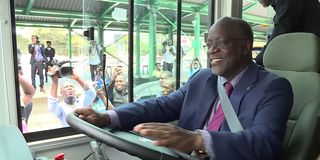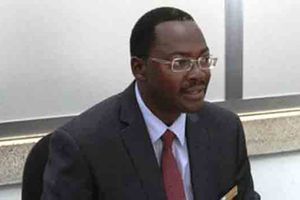Phase II of rapid bus project to start

President John Magufuli inaugurates Udart services two years ago. The second phase of the project is expected to start at the end of this year. PHOTO | FILE
What you need to know:
The process of compensating people whose properties would be pulled down along Kilwa Road has started
Dar es Salaam. The second phase of the Bus Rapid Transit (BRT) system is expected to start before end of this year.
The process of compensating people whose properties would be pulled down along Kilwa Road has started. The project will involve constructing 20.3km phase II infrastructure. That will include two flyovers and 29 bus stations on Kilwa Road from Kariakoo to Mbagala.
Dar es Salaam Rapid Transit Agency (Dart) public relations manager William Gatambi told The Citizen yesterday over phone: “The government has already disbursed Sh34.1 billion to compensate 105 people.” According to Dr Gatambi, people have been signing forms for them to leave the area within one month. The government wants the construction to start immediately when compensation is finalised. Already a constructor has been found.”
Dart is a bus-based mass transit system connecting suburbs of Dar es Salaam to the central business district. It began operations on May 10, 2016.
The transit system consists of six phases and the construction of the first phase began in April 2012 by the Austrian construction company Strabag International GmbH.
Accordint to sources, with the rapidly growing population of the city, the government began to draw up plans for a rapid transit system in 2003.
The government predicted the city population to grow over 5 million by 2015.
A bus rapid transit and a metro transit system were proposed but the metro system was not approved due to the high construction and operational cost involved. The project was placed under the Prime Minister’s Office and Dart was created. A 130km bus rapid transit was planned to cover over 90 per cent of the city’s population and the project was split into phases due to the large investment required.




